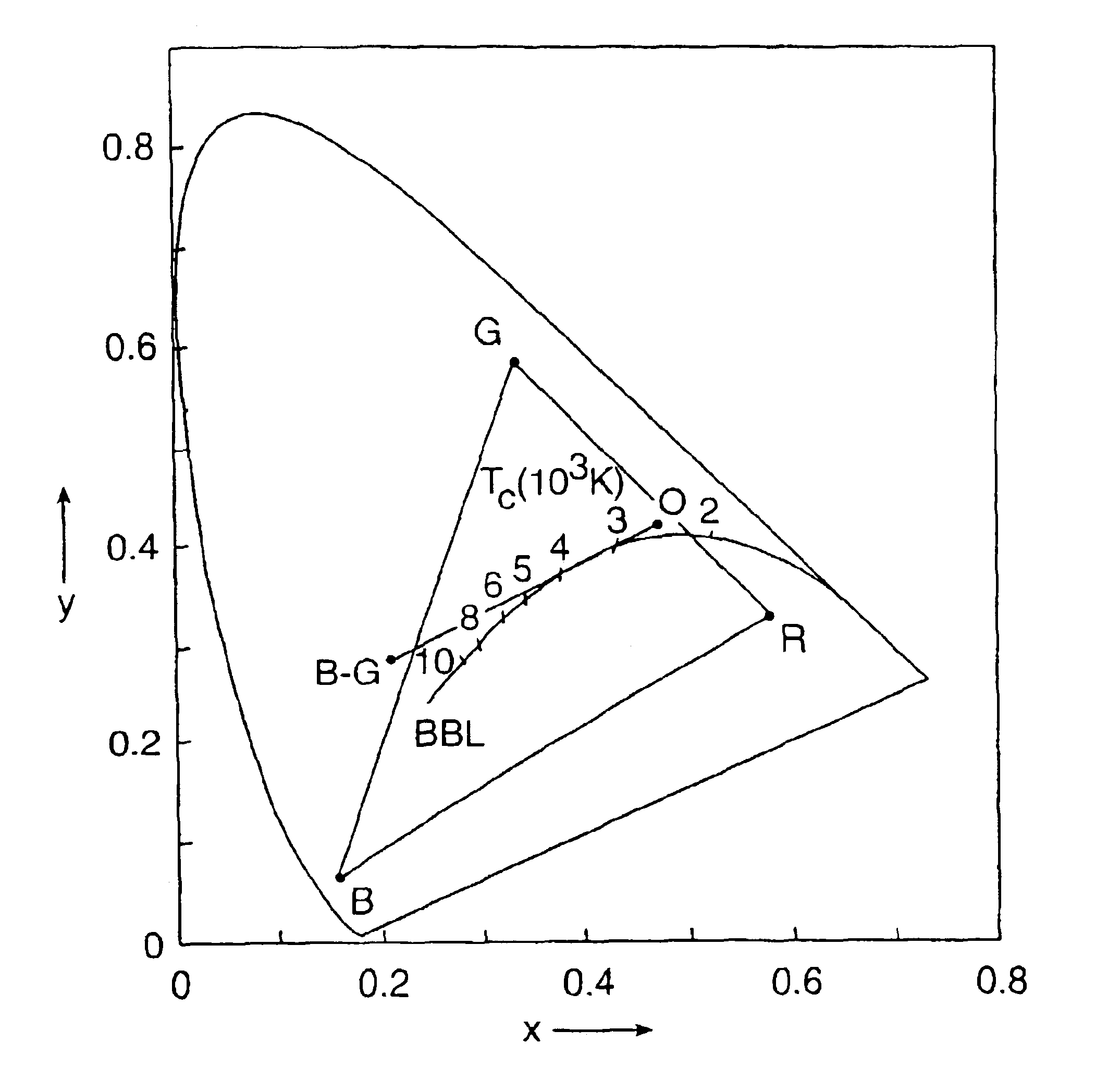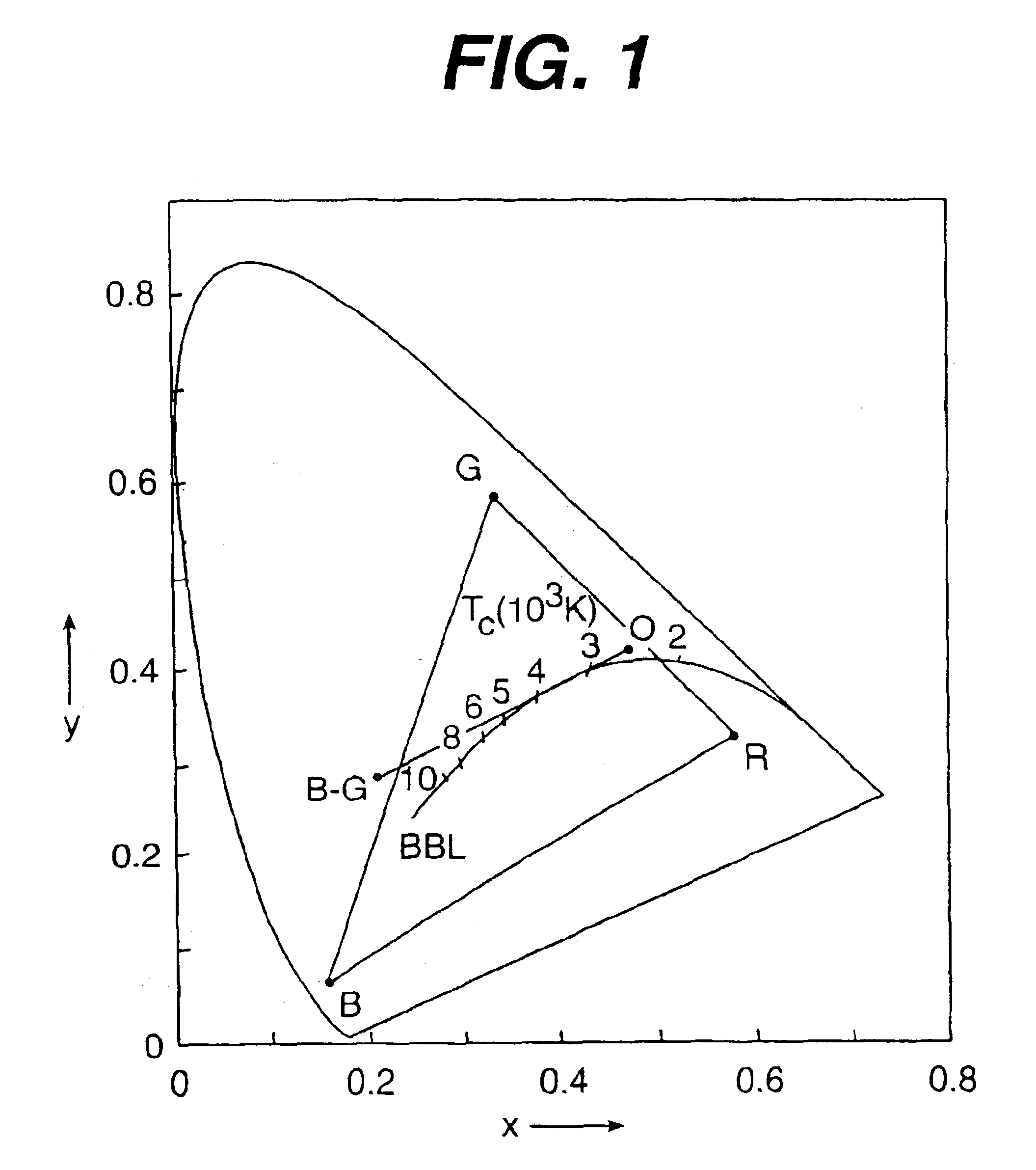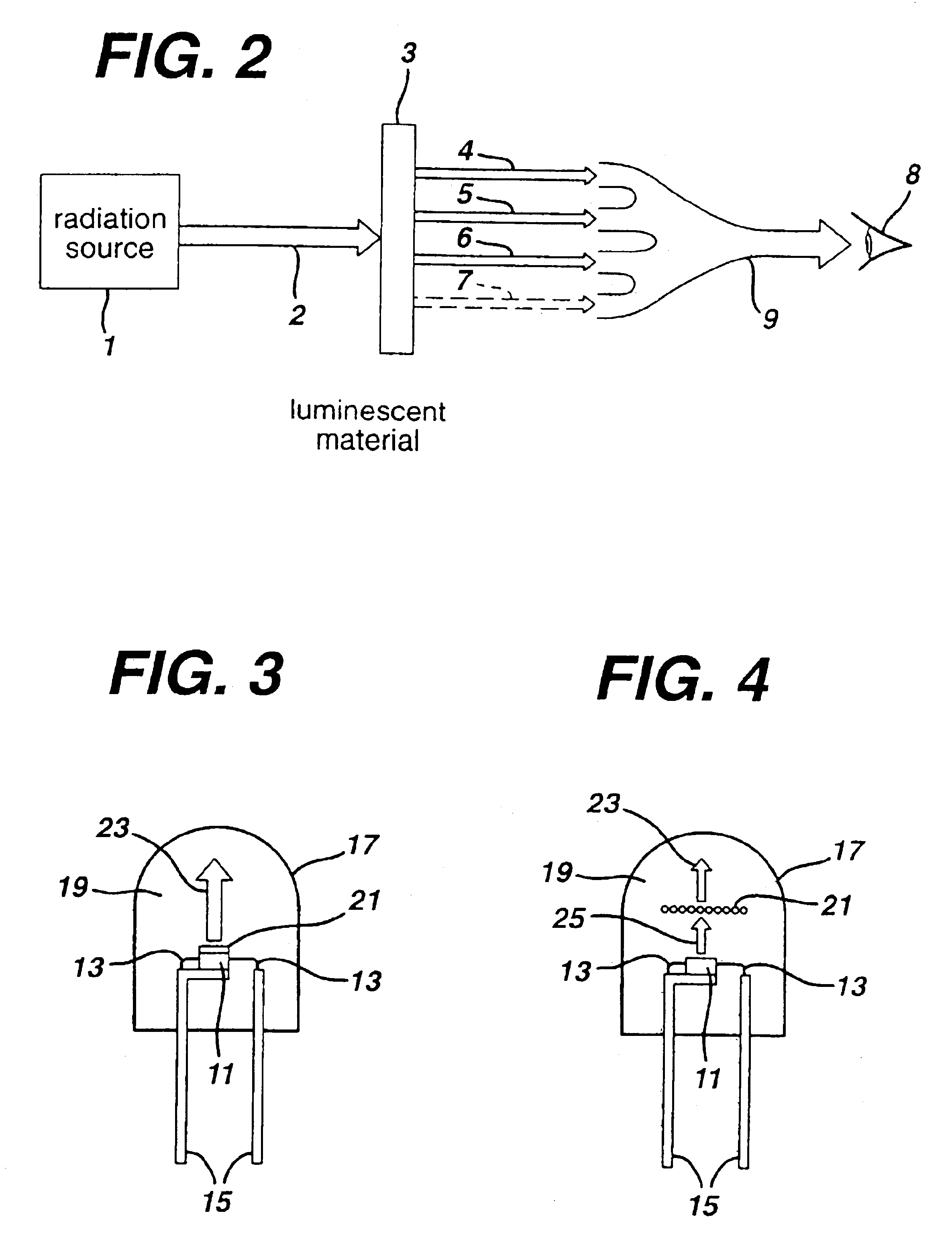White light emitting phosphor blends for LED devices
- Summary
- Abstract
- Description
- Claims
- Application Information
AI Technical Summary
Problems solved by technology
Method used
Image
Examples
example 1
[0101]Three blends of three phosphors were prepared by the above mentioned process. The blend composition was varied based on the peak emission wavelength of the radiation source to be used with the blend. In general, for LED radiation sources having a peak emission or excitation wavelength between 370 and 405 nm, the amount of the first orange emitting phosphor in the blend increased while the amount of the second blue-green and third blue emitting phosphors decreased with increasing excitation wavelength. The excitation wavelength, the blend composition, the CIE color coordinates (ccx and ccy), the color temperature, the CRI and the efficacy of the blend are summarized in Table II, below.
[0102]
TABLE IIPHOSPHOREXCITA-BLENDColorEfficacyTION λ(WT %)ccxccyT (K)CRI(lm / W)380 mmSrP(57.5).4011.3807350770.5346.4BASI(21.5)SECA(21.0)390 mmSrP(61.4).3995.3830356570.7347.3BASI(19.4)SECA(19.2)405 mmSrP(73.7).3899.3791376772.3349.6BASI(12.1)SECA(14.2)
[0103]In the above table, the following abbre...
example 2
[0104]Three blends of four phosphors were prepared by the above mentioned process. The blend composition was varied based on the peak emission wavelength of the radiation source to be used with the blend. In general, for LED radiation sources having a peak emission or excitation wavelength between 370 and 405 nm, the amount of the first, second and third phosphors in the blend increased while the amount of the fourth phosphor decreased, with increasing excitation wavelength. The excitation wavelength, the blend composition, the CIE color coordinates (ccx and ccy), the color temperature, the CRI and the efficacy of the blend are summarized in Table III, below.
[0105]
TABLE IIIPHOSPHOREXCITA-BLENDColorEfficacyTION λ(WT %)ccxccyT (K)CRI(lm / W)380 mmSrP(12.7).4017.3835351993285BASI(10.0)SECA(7.4)MgF(69.9)390 mmSrP(17.6).4065.3793337493.5272.2BASI(11.8)SECA(9.0)MgF(61.6)405 mmSrP(41.5).3967.3743355791.3264.7BASI(14.2)SECA(12.8)MgF(31.5)
[0106]In the above table, the following abbreviations w...
PUM
 Login to View More
Login to View More Abstract
Description
Claims
Application Information
 Login to View More
Login to View More - R&D
- Intellectual Property
- Life Sciences
- Materials
- Tech Scout
- Unparalleled Data Quality
- Higher Quality Content
- 60% Fewer Hallucinations
Browse by: Latest US Patents, China's latest patents, Technical Efficacy Thesaurus, Application Domain, Technology Topic, Popular Technical Reports.
© 2025 PatSnap. All rights reserved.Legal|Privacy policy|Modern Slavery Act Transparency Statement|Sitemap|About US| Contact US: help@patsnap.com



